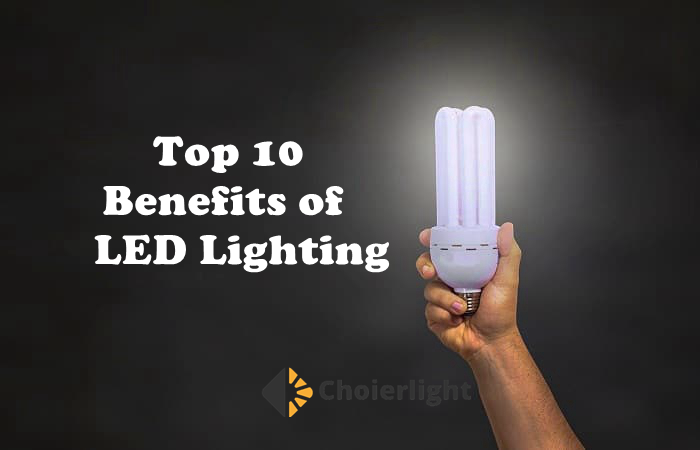
Top 10 Advantages of Opting for LED Lights Over Conventional Lighting
Share
There's considerable buzz surrounding the energy efficiency benefits of LED lights (light emitting diodes) compared to traditional lighting. LED lighting stands out as the most energy-efficient, clean, and eco-friendly illumination method available. Essentially, LED lighting represents digital light and boasts a plethora of remarkable advantages.
1. Long Lifespan:
The top benefit of LED lights is their long lifespan, lasting up to 100,000 hours—equivalent to 11 years of continuous use or 22 years of 50% operation. Unlike standard lights, LEDs don't abruptly burn out; instead, they gradually dim over time, maintaining functionality for around 20 years with 8 hours of daily use.
2. Energy Efficiency:
LEDs are the most efficient lighting option today, boasting an estimated energy efficiency of 80%-90% compared to traditional bulbs. In contrast, incandescent bulbs operate at a mere 20% efficiency, with 80% of electricity wasted as heat.
3. Ecologically Friendly:
LED lights are toxin-free and 100% recyclable, unlike conventional fluorescent bulbs which often contain hazardous materials like mercury. By using LEDs, you can reduce your carbon footprint by up to a third and save the material and production equivalent of 25 incandescent bulbs per LED bulb. It's a significant stride towards a greener future!
4. Durable Quality:
LEDs are exceptionally durable, built with sturdy components that can withstand rough conditions including shock, vibrations, and external impacts. This makes them ideal for outdoor lighting and suitable for public exposure, construction, and manufacturing sites.
5. Zero UV Emission:
LED illumination emits minimal infrared light and virtually no UV emissions, making it ideal for illuminating heat-sensitive goods and UV-sensitive objects or materials found in museums, art galleries, and archaeological sites, among others.
6. Design Flexibility:
LEDs offer versatile shaping possibilities for highly efficient illumination. With individual LEDs capable of dimming, they enable dynamic control over light, color, and distribution. Well-designed LED systems create captivating lighting effects, influencing both mood and cognitive state. Already implemented in airplanes and classrooms, LED mood illumination is poised to become more prevalent in our daily surroundings in the coming years.
7.Operational In Extremely Cold Or Hot Temperatures:
LEDs excel in both cold and hot outdoor temperatures, unlike fluorescent lamps which may struggle in extreme conditions. LED illumination performs reliably in cold settings like outdoor winter environments and freezer rooms, and equally well in hot conditions during the summer months.
8. Light Dispersement:
LEDs are engineered to concentrate their light and can be directed to specific locations without relying on external reflectors, resulting in higher application efficiency compared to traditional lighting. Expertly designed LED illumination systems effectively deliver light precisely where it's needed, enhancing overall efficiency.
9. Instant Lighting & Frequent Switching:
LED lights instantly brighten when powered on, offering significant advantages for infrastructure projects like traffic and signal lights. They can be frequently switched on and off without impacting their lifespan or light emission. In contrast, traditional lighting may take seconds to reach full brightness and suffers from reduced operational lifespan with frequent switching.
10. Low Voltage :
LED illumination requires only a low-voltage power supply, simplifying its use in outdoor settings. Connecting an external solar-energy source further enhances its suitability for remote or rural areas, highlighting a significant advantage of utilizing LED technology in such environments.
Any need for USA Stock Free Shipping led lighting, mounting parts, and light poles, please contact us: sales@choierlight.com.
